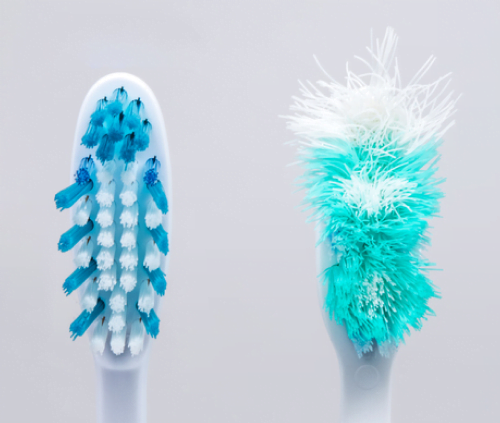How to maintain your toothbrush properly?
We often must remember to give our trusty oral companion the care and attention it needs. This guide shows you the finer points of maintaining your toothbrush to keep your teeth white and healthy, which is good for your oral health.
Rinse before and after use.
Start with a simple but effective habit: cleaning your toothbrush well before and after each use. To get rid of any toothpaste, mucus, or other debris that might be stuck on it, just run it under running water. In this way, germs can’t build up on the bristles, so the brush always stays clean.
Dry correctly in the air.
While standing up, let your toothbrush air dry after you rinse it. Fungi and bacteria increase in damp places, so this stops them from spreading. Putting your toothbrush in a tight container or covering it immediately is not a good idea because it can help bacteria grow.
Replacement Often
Like all other tools, brushes have a limited useful life. The American Dental Association (ADA) says that you should get a new toothbrush every three to four months or sooner if the bristles start to break. When the bristles are frayed, the toothbrush is less effective at cleaning, and an old toothbrush may harbour pathogens, which puts your oral health at risk.
Holder to Keep Your Toothbrush Clean
The purchase of a high-quality toothbrush holder is an investment that is both stylish and useful. By choosing containers with openings, you can stop bacteria from growing by ensuring air flows appropriately. Like your toothbrush, you should clean the case regularly to keep it in perfect shape.

How to maintain your toothbrush properly
Keep your thoughts to yourself.
Sharing can be a nice thing to do in some situations, but not when it comes to toothbrushes. Sharing toothbrushes with family or friends is unsafe because pathogenic germs and viruses could enter your mouth. For the best oral health, everyone needs a toothbrush.
Traveling with Care
Keeping your toothbrush clean while you’re moving is just as essential. Invest in a travel toothbrush case with airflow holes. This will protect your toothbrush from outside germs and make it easier for it to dry naturally. If you use a plastic bag, make sure it has holes so air can flow through it. Alternatively, take the toothbrush out when you get to the right place.
Turn down disinfectants
Using mouthwash or disinfectants to clean your toothbrush might sound appealing, but you shouldn’t and could even be hurt by doing so. It’s enough to rinse the item with water and let it dry. Using abrasive chemicals to clean your teeth could damage the bristles and bring foreign objects into your mouth.
Check-Ups Often
Ensure you check your toothbrush often for damage, staining, or signs of wear. If any of these things happen with your old toothbrush, you should get a new one as part of your oral health routine.
Looking at other possible choices
If you care about the earth, use an electric toothbrush with heads that can be changed. A lot of the time, these devices comes with UV sanitizers that kill germs on the brush head, making it cleaner.



Leave a Reply
Want to join the discussion?Feel free to contribute!